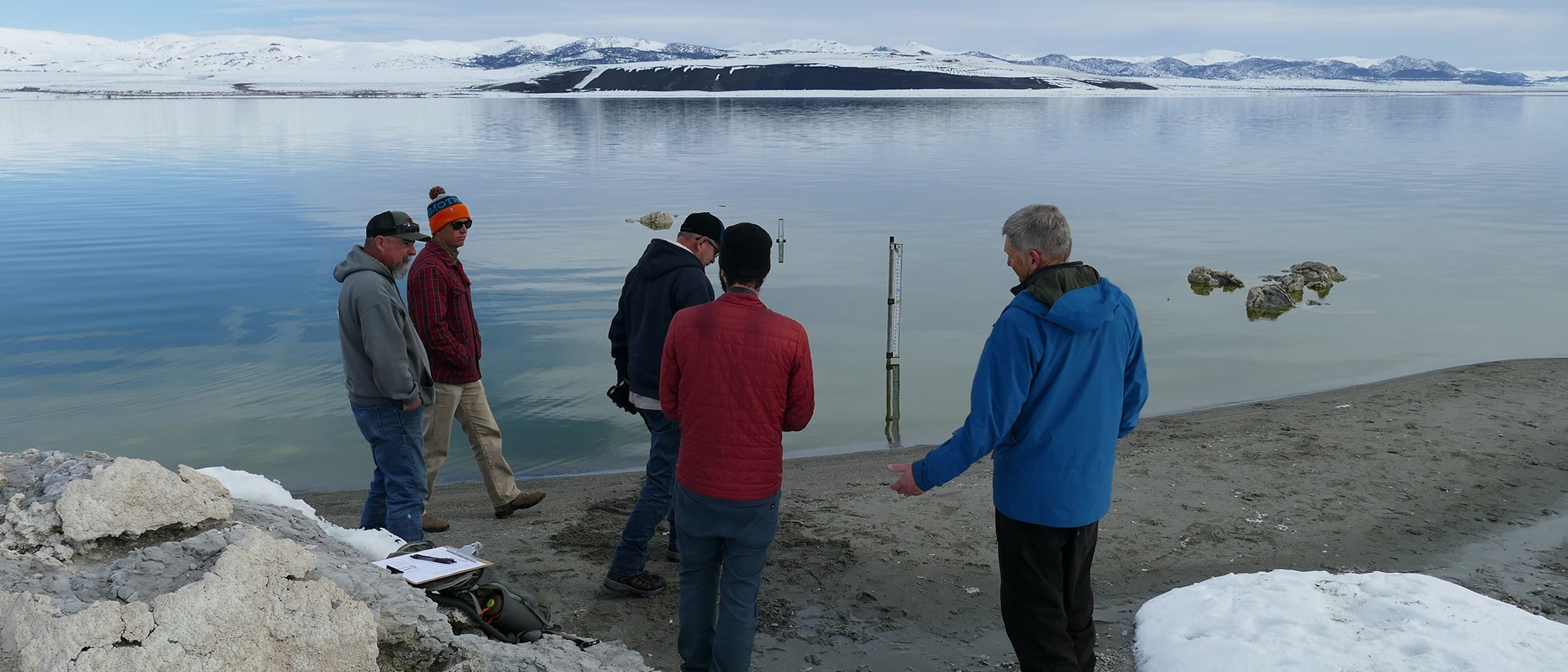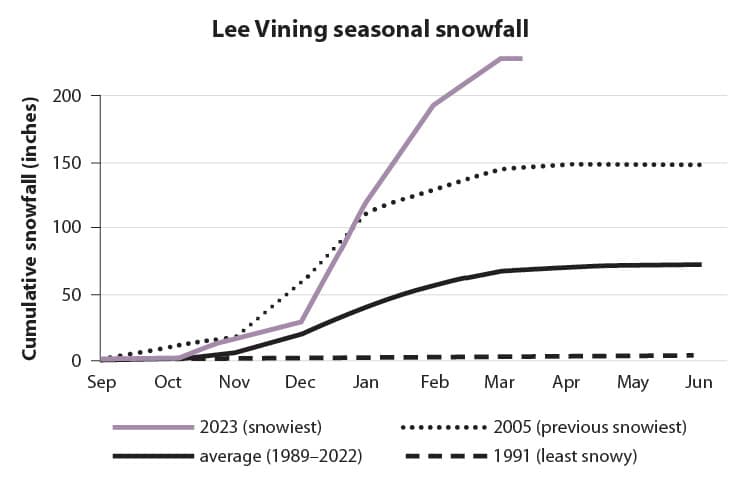
Streamwatch: Astonishing snowpack numbers portend record runoff
A dry 2022 ended abruptly in November with a foot of snow. Despite the continuous precipitation all winter, consistently cold weather kept winter streamflows low. But with record snowpack, 2023 will bring record snowmelt runoff.
The Mono Basin high country had its wettest December, January, and March on record. The lower elevations had record January and February snowfall, adding up to the snowiest year on record with more than 229 inches of snowfall in Lee Vining as of April 1 and a maximum snow depth of 67 inches. Around Mono Lake, when it wasn’t snowing it was foggy, and the deep snowpack absorbed the rainfall from the one warmer March storm, which kept it from melting until April.
Gem Lake snow water equivalent was the first high country snow survey record broken—on February 1. There were no March 1 snow surveys due to the tremendous snowfall the last week in February. As this Newsletter goes to press in early April, snow surveyors traveling by helicopter have measured well-above record snowpack for April 1 at all measured locations.
This will be an Extreme-wet runoff year-type and there will be a record amount of snowmelt running down the streams well in excess of the minimum-required Stream Ecosystem Flows.
Lakewatch: Mono Lake could rise 4 feet, but those gains may be temporary
Mono Lake dropped to a low of 6378.4 feet above sea level in early December—the lowest level since 2017 and a 1.5-foot drop from last year’s high point on April 1, 2022. Fortunately, winter storms raised the lake by more than 1.5 feet to 6379.99′ by April 1, 2023. This is 0.01′ below the threshold for increased exports, therefore only 4,500 acre-feet can be diverted this year when space in the Los Angeles Aqueduct becomes available in the fall.
January’s rise was the third-largest January rise in history. The combined December and January lake rise of 0.88′ was the fourth-biggest December–January rise in the record and the biggest since a 1.15-foot rise in December 1996–January 1997.
A lake level above 6380′ makes the nesting California Gulls safer as they establish nests and lay eggs. Fortunately, once the incredible snowpack melts, the lake will rise another 3 to 4 feet and keep the gulls out of danger next year.
As we saw during the extremely wet 2017, when Mono Lake rose 4.5′ in a year, even large gains in lake elevation this year could be lost with continued diversions, putting the lake back in the danger zone in a few years. But if diversions are paused the lake will stay higher, keeping the gulls safer.

This post was also published as an article in the Winter & Spring 2023 Mono Lake Newsletter. Top photo by Nora Livingston.
